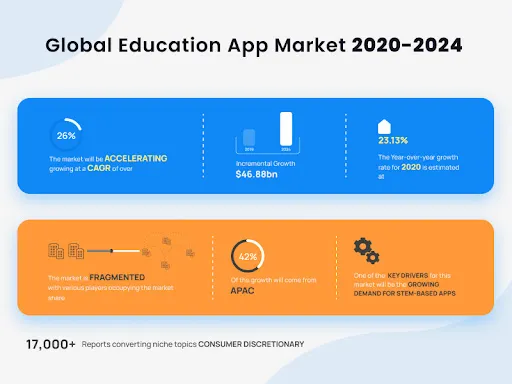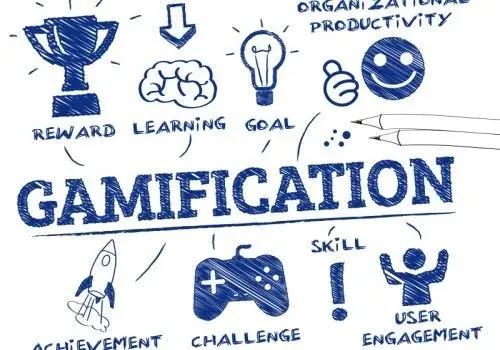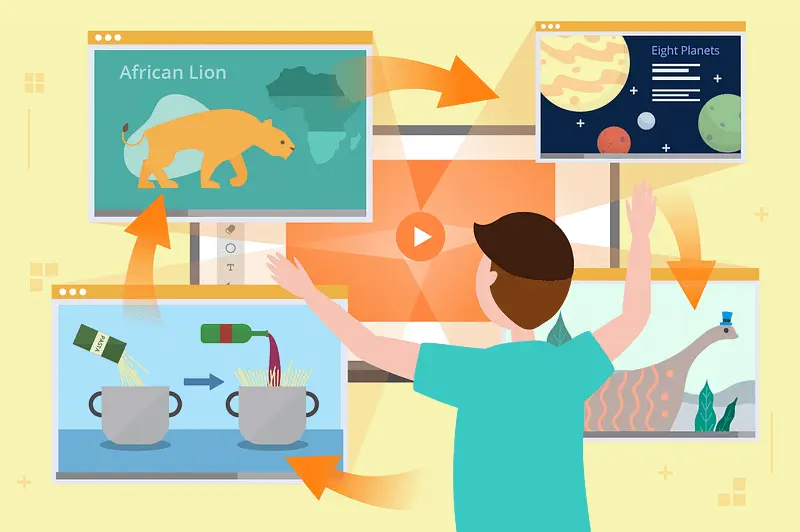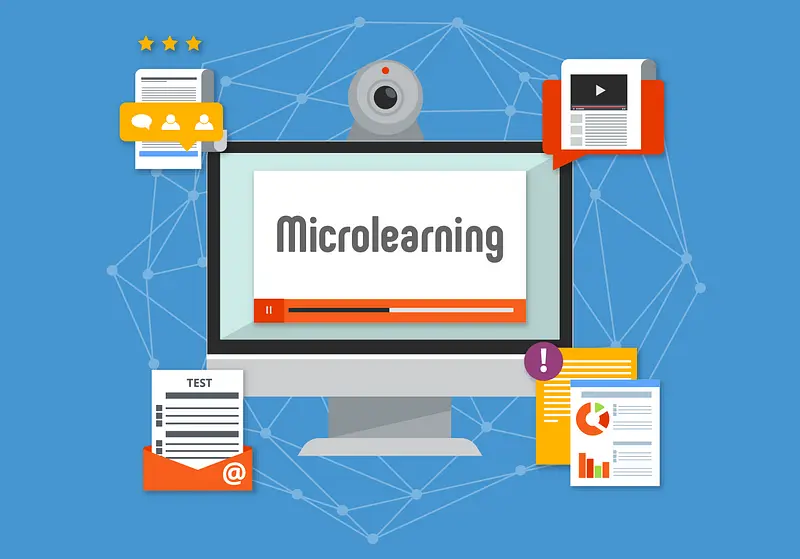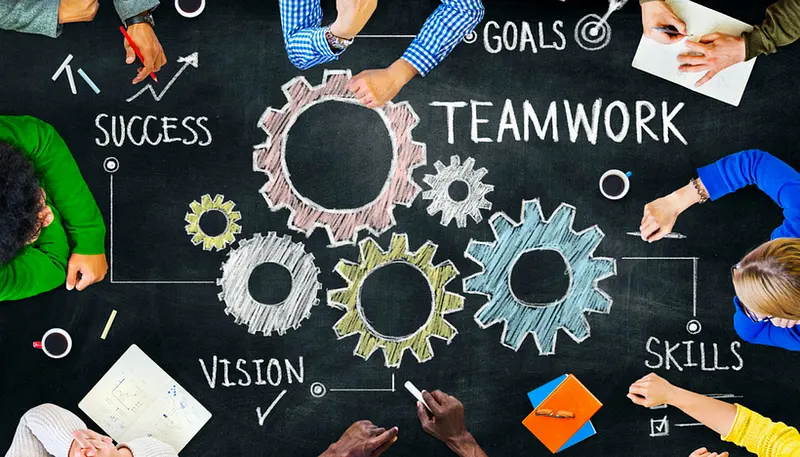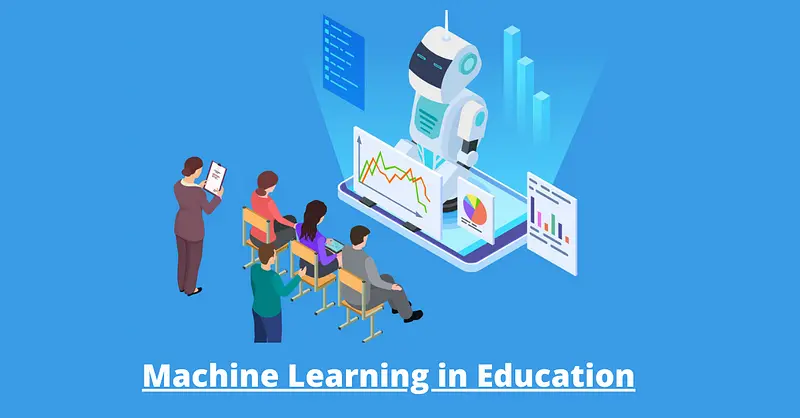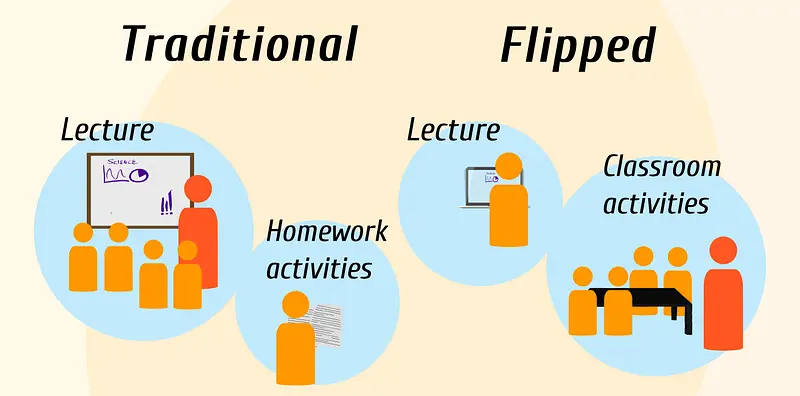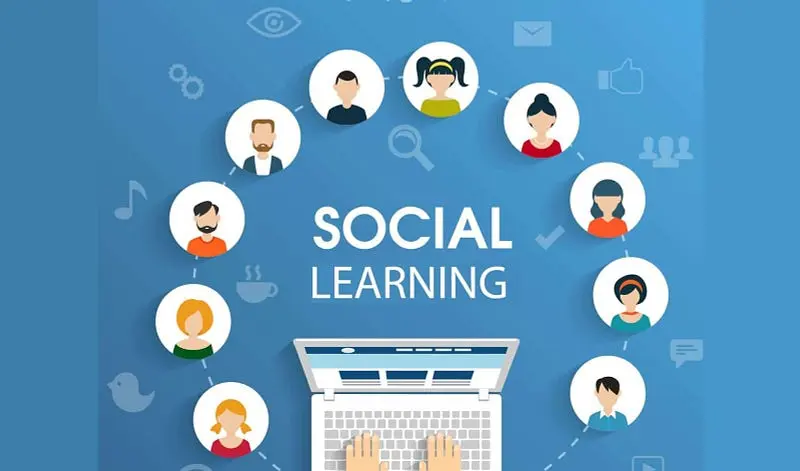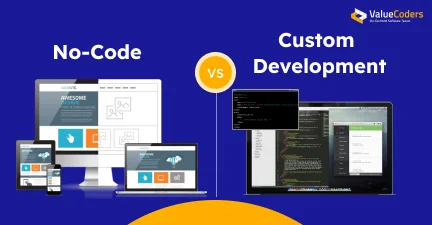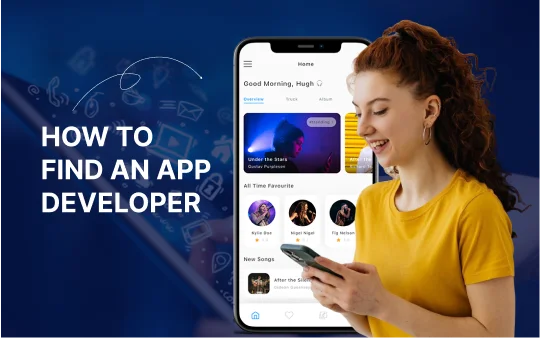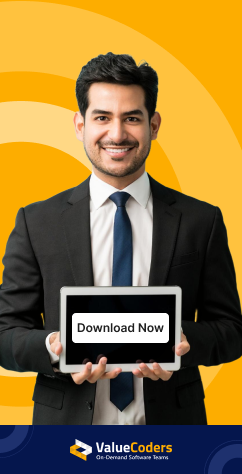Education is a broad term, and when it comes to mobile app development, there is a diverse range of software companies that offer various educational apps. We are living in a digital world, where many children are growing up with apps and digital media as a part of their life.
Distance education, underpinned by mobile access, has increased, and it is bringing unprecedented competition to traditional models of schooling. We can say educational app development technologies have enhanced students’ learning.
The injunction for mobile education is so high that experts anticipate the market to expand by $46.9 billion with a CAGR of about 26% by 2024.
In order to incorporate educational application development trends in your business applications, it becomes important to know about the latest trends in this area.
So let’s move further and know the 8+ Educational Mobile App trends…
8+ Top E-Learning Mobile Application Development Trends
Here view the list of best Educational app development trends for 2024. In fact, there are many mobile app development companies that are focusing on developing mobile applications for the education sector.
Moreover, it is true that a mobile educational application can provide a large number of benefits to both students and teachers.
So if you also want to create a leading educational app using Mobile Application development trends, hire a reliable Education development company to avail e-learning development services.
1. Gamification
Consider adding some gamification elements, which are becoming more popular among educators. This includes badges and points, leaderboards, and puzzle-style activities.
Including some games, mechanics can increase student engagement. Another benefit of gamification is it allows you to quickly iterate on your content and make changes based on data gathered from users as they interact with your app.
If your app involves capturing data, such as in a quiz or test environment, gamification could be a great way for students to continue interacting with your content even after class is over.
If you’re just looking for some quick inspiration, check out some of these gamification examples:
- Quizlet offers point-based challenges that build on each other, making it easy for students to progress through a series of challenges.
- Brainly uses badges as an alternative to points and leaderboards as another way to increase engagement.
- For puzzle-style activities, Kahoot is a great option that keeps students engaged by turning their learning into a game format.
- Another great app for education is ScienceSpot, which helps teach science in a fun environment with multiple games based on different scientific principles. Students can even add their own science-related questions and answers if they aren’t satisfied with what is currently available.
Also Read: Top 11 Education & ELearning Software Development Companies
2. Video Content
As opposed to having a text-heavy page, video content gives your website visitors something more engaging and interesting to focus on. In fact, visual information has been shown to be processed 60,000 times faster in human brains than written information.
And guess what? More than 82% of traffic online is video traffic (what’s new in publishing). By getting some video content onto your site, you’ll give yourself an edge when you want people to engage with your brand.
Video content in educational applications can include instructional videos, demonstrations, or tutorials that are embedded into a lesson plan. It’s also crucial to note that video content isn’t just for websites anymore — it can also be used for mobile apps as well!
For example:
- Khan Academy proffers 1000+ free instructional videos for students to learn from at their own pace. These videos are available on both desktop and mobile devices, making it easy for students to learn on the go.
- In a similar vein, Duolingo offers an app that is geared towards learning a new language through fun and engaging methods — all while tracking your progress along the way!
This app is also available on both desktop and mobile devices, allowing you to seamlessly transition between platforms as you work towards mastering a new language.
- TeacherPayTeachers allows teachers to create and sell lesson plans online (in the form of video), which can be accessed by other teachers who are looking for supplemental material in their classrooms or homeschoolers.
Also Read: One Million Downloads: Discover the Secret Behind Our eLearning App’s Success
3. Micro Learning
Gone are the days of 30-minute lectures on outdated topics. Thanks to rapid technological advancements, we’re able to fit a lifetime of education into our pockets with mobile apps known as microlearning.
The bite-sized lessons help you learn on your schedule without ever leaving your smartphone behind. If you want something more engaging than flashcards, mobile educational apps might be just what you need.
There are so many popular educational applications that focus on microlearning educational mobile app trends, like:
- Coursera
- Udemy
- Khan Academy
Check out the example below: How Microlearning Works? Examples of Microlearning in Education App:
The development companies have implemented different methods for delivering content in their products. Some use slideshows, others video or interactive elements.
The example from Coursera is presented in the form of live coding (applications source code is written in real-time).
One of the most recent trends is to show code execution within an emulator for each language being taught (in most cases, it’s JavaScript). Students can run code within an emulator, which runs on the mobile device itself, instead of downloading the entire software development kit for each new language being learned.
Live coding gives the ability to students who already know programming basics but want to learn new languages at their own pace & not lose knowledge acquired before.
Also Read: The State of UI/UX Design in Mobile App Development: Trends
4. Artificial Intelligence (AI)
The best E-Learning app development companies are using artificial intelligence and machine learning more frequently in their mobile educational apps. AI in education is being utilized for personalization, helping learners find information faster and more effectively.
AI is also being used to create adaptive content, which means that if a learner struggles with a topic, they will be directed towards resources that help them learn it better.
This technology can also be used for the personalization of coursework, which helps students stay on track with their studies.
- Most famous educational apps like Khan Academy use AI in some way or another. In fact, one of the most popular features of Khan Academy’s app is called Smart Timer. It tracks your progress through each video and gives you hints when you need them.
- Duolingo and Rosetta Stone use AI in many of their features.
If you’re looking to incorporate an educational mobile app into your business, get connected with an Education app development company. By doing so, you will get an expert who will help you in developing a leading application.
5. Collaborative Learning
Does your app have a social component? The growing popularity of learning platforms like Edmodo and Pear Deck shows that many students (and teachers) love learning from peers.
If you’re creating an educational app, include a way for users to interact with one another in some capacity — ideally, a platform that promotes collaborative sharing, feedback, and problem-solving.
Students will take great ownership over their own learning if they feel like they can collaborate with other users when solving problems or asking questions.
Think about how you can incorporate social functionality into your educational mobile app development process — including discussions, commenting systems, and interactions like #hashtags.
Moreover, think about how you can make it easy for teachers to access student work and respond accordingly. With so much potential value being created by students, it’s important to give them tools that help them showcase their work.
A teacher should be able to easily view all student submissions within an app at once and provide comments back on those submissions via simple thumbs up/down buttons. This type of comment system provides quick peer review while still allowing teachers flexibility in providing feedback.
Also Read – Top LMS Development Companies To Seek In 2024
Few famous education apps use collaborative leading as it is one of the majorly used Educational Mobile App trends:
- Canvas allows educators to assign homework directly through their online interface, which is then automatically sent out as a push notification to each student’s device.
Once students open up Canvas on their phones, they are presented with individual assignments along with comments from fellow classmates who may have already completed the assignment.
- Google Classroom has a built-in discussion board where students can post questions for others to answer. These discussion boards also allow teachers to monitor conversations and jump in when necessary.
- Virtual Reality (VR)/Augmented Reality (AR) integration
VR and AR integration is one of the best Educational Mobile App trends that will only continue to grow. The technology has been used for years but has recently begun making its way into classrooms.
For example:
- Google’s Expeditions Pioneer Program allows students to take virtual field trips around the world with their classmates without leaving their classroom.
- It’s also being used by companies like Boeing, which uses VR technology for employee training. While it’s still too early to know what exactly these trends will mean for education, it’s clear that they have the potential to change how we learn and teach forever.
In addition to VR/AR integration, mobile apps are becoming more personalized than ever before. This includes customized learning plans based on students’ strengths and weaknesses as well as apps that use artificial intelligence (AI) to adapt to each student’s learning style.
As AI continues to improve over time, it could provide teachers with an invaluable tool for delivering individualized instruction at scale.
Also Read: Top 11 Education & eLearning Software Development Companies
6. Machine Learning
Nearly all major education apps incorporate some sort of machine learning or artificial intelligence (AI) technology. For example,
- Chegg, a company that provides textbook rentals and homework help, uses AI to create personalized study schedules for students based on their academic history.
- Similarly, ClassDojo is an app that allows teachers and parents to monitor student behavior in real-time by using a smartphone camera.
- The app analyzes each photo and detects how many students are paying attention or whether they’re engaged in inappropriate behavior. It then sends teachers instant alerts so they can intervene if necessary.
As machine learning becomes more prevalent in mobile applications, it will likely have a significant impact on everything from test prep to virtual reality (VR) training.
7. Flipped Classroom Approach
With a flipped-classroom approach, students watch video lectures outside of class on their own time and in their own space. Teachers use class time for activities such as small group discussions or problem-solving exercises.
In an effort to make learning more dynamic and foster critical thinking skills, educators have begun turning toward flipped classrooms.
And because videos can be made at any time and taught by anyone, they’re making it more manageable for teachers to integrate technology into their curriculum — which is particularly important as schools continue wrestling with budget constraints.
For example:
- A study published by Harvard found that instructors in three schools who adopted elements of an ‘engaged learning’ curriculum saw significant improvements among their middle school students.
- In another study from UCLA, researchers discovered that increased use of online content increased academic performance among first-year college students taking science courses.
Flipped learning doesn’t have to be limited to just math and science either; schools across America are beginning to flip English classes as well.
8. Social Learning
As mobile devices and applications become more popular, so does social learning. Social learning is the process of creating, sharing, using, and adapting new knowledge within a community of practice.
Educators have seen benefits in using social learning — some claim it increases student engagement and creates more personal connections between teachers and students.
If you are trying to create an educational mobile app, keep social learning in mind while designing — it could help your app rise above all others.
There are so many examples of education apps using social learning:
- StudyBlue
- Coursera
- Blackboard Learn
- Khan Academy and
- Duolingo
These apps use features like peer-to-peer communication, discussion boards, or collaborative projects to allow users to learn from each other. Some even have built-in tools that allow users to contribute their own content or answer questions posed by other users.
In addition to offering support for social learning, these types of apps can also be integrated with other platforms like Twitter or Facebook for additional user interaction opportunities.
The educational industry provides a tremendous opportunity to technology startups, so businesses should do thorough research before developing a quality educational application that fulfills the needs of the market.
Related Post: How To Kickstart Mobile Application Development
Ending Words
With so many different mobile e-learning app development trends on the rise, it can be tough to know which ones to focus on for your own application. Need our advice? Try them all! Well, not really.
But do make sure that you incorporate gamification, video content, and machine learning into your e-learning app as soon as possible — they’re only going to become more popular in the coming years.
And if you’re seeking more ways to use AI and AR/VR in your e-learning applications, we’ve got you covered there too. Stay ahead of the curve and give your audience (students and teachers) the best educational experience that they will never forget.
If you are looking to build an innovative educational app, then hiring an agile software development team from the best Education app development company (ValueCoders) can be a very cost-effective option.

